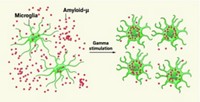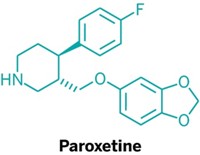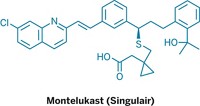Advertisement
Grab your lab coat. Let's get started
Welcome!
Welcome!
Create an account below to get 6 C&EN articles per month, receive newsletters and more - all free.
It seems this is your first time logging in online. Please enter the following information to continue.
As an ACS member you automatically get access to this site. All we need is few more details to create your reading experience.
Not you? Sign in with a different account.
Not you? Sign in with a different account.
ERROR 1
ERROR 1
ERROR 2
ERROR 2
ERROR 2
ERROR 2
ERROR 2
Password and Confirm password must match.
If you have an ACS member number, please enter it here so we can link this account to your membership. (optional)
ERROR 2
ACS values your privacy. By submitting your information, you are gaining access to C&EN and subscribing to our weekly newsletter. We use the information you provide to make your reading experience better, and we will never sell your data to third party members.
Biological Chemistry
Small Molecule Improves Learning In Healthy People
Neuroscience: The compound D-cycloserine enhances cellular changes in the brain that lead to learning
by Michael M. Torrice
December 2, 2015
| A version of this story appeared in
Volume 93, Issue 48

We learn from experience: It sounds like a trite sentiment posted by a friend on Facebook, but neuroscientists would agree. Our interactions with the world around us strengthen and weaken the connections between our neurons, a process that neuroscientists consider to be the cellular mechanism of learning.
Now researchers report that boosting signaling of a certain receptor in the brain with a small molecule can enhance these cellular changes and improve learning in people. The findings could lead to new treatments for patients with disorders associated with deficits in learning, such as Alzheimer’s disease and schizophrenia.
Through decades of research on how synapses change in animal brains, scientists have found that the N-methyl-d-aspartate receptor (NMDAR) plays a critical role in strengthening synapses during learning. Compounds that increase NMDAR signaling can drive such changes and, as a result, help animals learn new tasks.
Robert F. Asarnow at UCLA and colleagues wanted to test whether one such compound, d-cycloserine, would act similarly in people. But neuroscientists measure synapse changes in animals by sticking electrodes into slices of brain tissue to record electrical signals. “Obviously, we don’t do that to our friends,” Asarnow says.
So his team used electroencephalography (EEG) to record electrical activity through electrodes stuck to the scalps of its subjects. The team monitored this activity as the subjects watched a certain pattern flash on a screen at high frequency for a couple minutes. Afterward, the subjects showed a spike in EEG activity in their visual cortex when they viewed the pattern at a later time. This suggested a population of neurons had wired themselves together by strengthening their synapses.
People given a single dose of d-cycloserine showed greater activity spikes than subjects not taking the compound, a sign that it enhanced the bolstering of those connections. The compound also led to better performance in two tests of experience-dependent learning (Proc. Natl. Acad. Sci. USA 2015, DOI: 10.1073/pnas.1509262112).
The results are exciting, says Stefan G. Hofmann of Boston University. This is the first evidence that d-cycloserine can enhance forms of cognition relevant to some psychiatric disorders, he says.






Join the conversation
Contact the reporter
Submit a Letter to the Editor for publication
Engage with us on Twitter